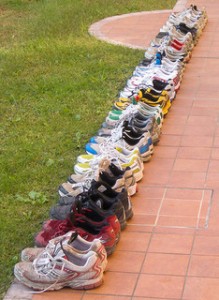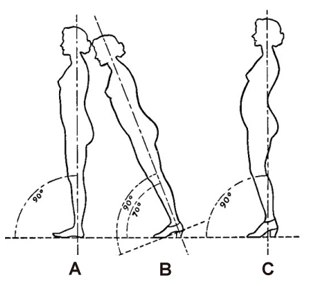Successful running – and injury prevention – is really a full-time job.
Hopefully that didn’t scare you off from accomplishing your race goals. But truthfully, what makes you faster is often what you do in between workouts than what you do while running.
So get enough sleep every night.
Avoid hours of CrossFit AMRAP sessions in the weeks leading up to your marathon.
Eat a healthy diet (no need to be perfect) and try not to party too hard.
All of these “little things” help you stay healthy and feeling good every day. Compare two runners doing the same training: the person who takes care of herself will always adapt more effectively to the workload than the person who skips sleep, eats a ton of fast food, and likes to go out to the bar four nights a week (I feel old just typing this…).
But you already know this. It’s no surprise that you need to rest, eat clean, and take care of your body.
Recently Brian emailed me with an interesting question about running shoes. Taking care of yourself goes beyond the basics of sleep and solid nutrition. What you put on your feet – when you’re not running – every day can still impact how you feel while running.
It’s a new twist on the age-old question of “what shoes should I wear?” Brian asked:
I’m a doctor so I do a lot of standing throughout the day. Since I can wear scrubs, I’m allowed to wear tennis shoes or clogs. Traditionally my retired running shoes become my work shoes, but I’ve noticed that my knee starts to hurt when I do this. Do I need more cushion or arch support? I have an average arch height and I’m not much of a pronator.
How many times have we obsessed over what the best running shoe is for us but then change into ill-fitting dress shoes or (worse) high heels to go to work?
We know that running shoes come in a spectrum of sizes, shapes, heel heights, and levels of cushion. How do you decide what to wear when you’re not running?
There are virtually limitless options for what to wear every day if you have that flexibility. Just remember:
- Stiff dress shoes with an elevated heel can make your feet and lower legs sore if you’re not used to them
- High heels can shorten the achilles and prevent a host of leg problems. Avoid them if possible.
- Old running shoes with no support and significant wear patterns can also make you sore – it’s best to donate them
- Some people tolerate long periods of standing with little support (like me). If that’s you, go with a lightweight shoe with a minimal heel-toe drop and a softer sole (like boat shoes, minimalist running shoes, or drivers)
- If you need more support, a new(er) pair of neutral running shoes will work
Whatever your choice, remember that what you wear outside of running should complement your training. In other words, your casual shoes shouldn’t negatively impact your running because they’re old, stiff, or six inches off the ground.
To give you a visual illustration of how elevated heels can impact your overall posture, I borrowed this image from the blog of Tim Ferriss:

No wonder why my legs hurt after just a few hours in dress shoes! I can’t imagine how women feel after a night in stilettos.
Now I’m curious: what do you wear when you’re not running? How do your casual shoes impact your workouts?